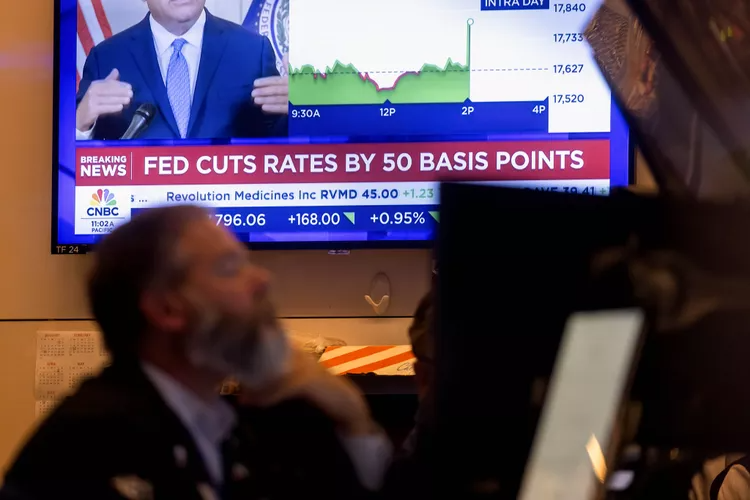How does the Sahm Rule work?
The “Sahm Rule” is a recession indicator that was created and is named after Claudia Sahm, a macroeconomist who worked at the White House Council of Economic Advisers and the Federal Reserve.1 According to the Sahm Rule, the early stages of a recession are indicated when the three-month moving average of the unemployment rate in the United States is at least half a percentage point higher than the lowest unemployment rate over the previous year.
The Sahm Rule is well-known for its accuracy, simplicity, and speed at which it can predict the beginning of a recession.
How to Apply the Sahm Rule.
The percentage of the population without a job is referred to as the unemployment rate. When the economy is doing well and workers are having trouble finding work, the rate tends to go up, but it goes down when the economy is strong and jobs are easier to find. The unemployment rate is one of the primary economic indicators used to measure the health of the economy, and the Sahm Rule inputs the rate into a straightforward formula to determine whether the United States is headed into a recession. The Bureau of Labor Statistics (BLS) typically publishes the unemployment rate for the preceding month on the first Friday of each month2.
The rule makes a comparison between the value of the lowest three-month moving average unemployment rate over the previous year and the value of the current rate. The Sahm Rule states that the United States is in the early stages of a recession if the former is at least half a percentage point higher than the latter. As a guest on The Investopedia Express podcast, which was released in April 2024, Sahm stated that the Sahm Rule uses the three-month moving average unemployment rate rather than the current unemployment rate to avoid overreacting to a single month’s data.
The economy is in the early stages of a recession, according to the Sahm Rule. According to Sahm, the indicator has never been triggered outside of a recession since the beginning of the 1970s. In the past, when the unemployment rate exceeded the Sahm rule’s threshold, it continued to rise.
Various kinds of Sahm Rule Indicators
Sahm Rule recession indicators are available right now and in real time in the FRED database maintained by the Federal Reserve.
Recession Indicator for the Present Sahm Rule
Based on additional data from its survey that was not initially available, the BLS frequently revises the previous month’s unemployment rate. The revised values of the unemployment rate are used to calculate the current Sahm Rule recession indicator.5
Real-Time Sahm Rule Recession Indicator
The real-time Sahm Rule recession indicator uses “real-time” data, in contrast to the current indicator. It is calculated solely using the unemployment rate and the most recent history of unemployment rates available in a given month.5 The Sahm Rule’s History
In a policy proposal titled “Direct Stimulus Payments to Individuals” that was published by The Hamilton Project, an economic policy initiative that is a part of the Brookings Institution6, Sahm introduced the indicator that would later be named after her.6 The proposal was also included in the book “Recession Ready: Fiscal Policies to Stabilize the American Economy,” which came out in 2019, was published.
Sahm explained in the proposal that during recession growth, consumer spending typically slows significantly, which can exacerbate job losses and the recession as a whole. She suggested that when the three-month average national employment rate rises by at least half a percentage point from its lowest point in the previous year, the government would automatically distribute stimulus payments to families to combat unemployment.3 Sahm, Claudia Individual Stimulus Payments Directly” May 2019, pages, The Hamilton Project, The Brookings Institute 77.
According to Sahm’s explanation, “recent research finds that broadly distributed, lump-sum payments to individuals directly boost spending and help stabilize demand, making these types of payments effective responses to recessions.” “6 Gross domestic product (GDP) refers to a nation’s total market value of goods and services within a specific time frame. The total amount of stimulus would offset approximately half of the slowdown in consumer spending.” Automatic stabilizers are types of fiscal policies like those that Sahm proposed.
The Federal Reserve added the indicator to the FRED database in October 20195 after it gained widespread recognition.
The Sahm Rule’s restrictions.
In her newsletter, Sahm pointed out that the rule is “empirical regularity,” not a proposition. She emphasized that this indicates that breaking the rule is also possible.
In an April 2022 newsletter, Sahm wrote, “Imagine a scenario in which the unemployment rate increased to around 3.5 percent, up from a low of 4.0 percent, meeting the criteria for signaling the early stages of a recession” (Sahm Rule). She explained, however, that such a scenario probably would not constitute a recession if GDP growth remained around 2.5% at the same time, down from a peak of 5.5 percent, and inflation gradually fell to 2%.8 What is the Sahm Rule today?
The Sahm Rule is a recession indicator based on labor market conditions that was first introduced in 2019. According to the rule, we are in the early stages of a recession when the three-month average unemployment rate rises by at least half a percentage point above its 12-month low.6 Who established the Sahm Rule?
The indicator was introduced as part of a policy proposal by macroeconomist Claudia Sahm, who previously worked at the White House Council of Economic Advisers and the Federal Reserve. She was then given the rule’s name.
What is the Sahm Rule’s Accuracy?
Since the 1970s, the rule has proven to be very accurate, as the indicator has only ever triggered during the early stages of a recession.
The Conclusion
An indicator that indicates the early stages of a recession is referred to as the Sahm Rule. The rule states that the three-month moving average unemployment rate must be at least half a percentage point higher than the lowest three-month moving average unemployment rate over the previous year before a recession is considered to have begun. In the past, once this threshold was reached, the unemployment rate continued to rise.










